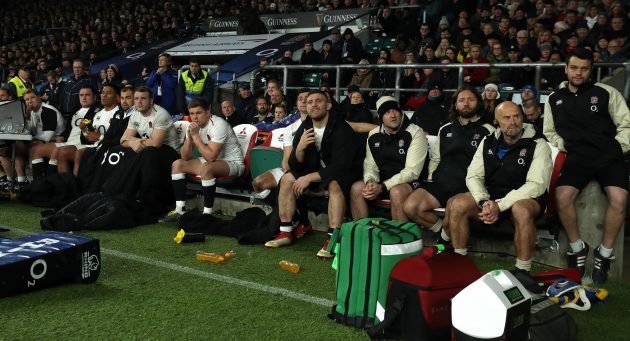A key selection decision in top-level rugby, we explain what a 6-2 split is and its impact on the game
A 6-2 split is when a team selects six forwards and two backs as its eight substitutes for a match.
With top-level rugby as physical as it has ever been, replacements are an essential part of the game, and deciding what personnel to have on the bench is key.
However, in terms of the distribution of positions amongst substitutes, there is typically only one major decision to be made.
Professional teams must have a back-up for all three front-row positions, and two other bench spots are almost always taken up by ‘back-five’ forwards who can play at lock, in the back-row, or both.

Maro Itoje is an example of a back-five forward (Getty Images)
The specialist nature of scrum-half means a replacement number nine is crucial, and a player who can cover at least some of the outside back positions is also required.
That leaves a final, more flexible spot on the bench, with the decision usually between another back-five forward, or an additional back.
If a team goes for the forward option, they will have a 6-2 split.
The 6-2 split, in theory, gives a team an advantage in the tighter areas, as they can select multiple forwards specialising at the breakdown or in the tackle, rather than relying on one individual to cover several roles.
Naturally, this route puts pressure on the starting back-line, because one player must cover as many of the six positions outside scrum-half as possible.
The alternative, a 5-3 split, allows a second specialist back, such as a fly-half, to be selected, as well as a ‘utility back’ who could slot into multiple three-quarter positions.
England head coach Eddie Jones came under scrutiny after the defeat to Ireland in the 2022 Six Nations for selecting a 5-3 split.
This gave fly-half George Ford a place on the bench, but he did not come on until the final seconds. Meanwhile, England’s two back-five replacements were stretched after Charlie Ewels’ red card and Tom Curry’s injury.

George Ford played only a few seconds against Ireland (Getty Images)
Against France this weekend, Jones may combat his opponent’s power game by reverting for the 6-2 split.
Les Bleus’ system is built around attacking rucks with several phases of pick-and-go, so increasing the forward presence amongst the substitutes would combat this.
In a 6-2 split, England could choose Elliot Daly, adept at wing and centre, or George Furbank, who can cover fly-half and full-back, as a replacement utility back.
Download the digital edition of Rugby World straight to your tablet or subscribe to the print edition to get the magazine delivered to your door.
Follow Rugby World on Facebook, Instagram and Twitter.






